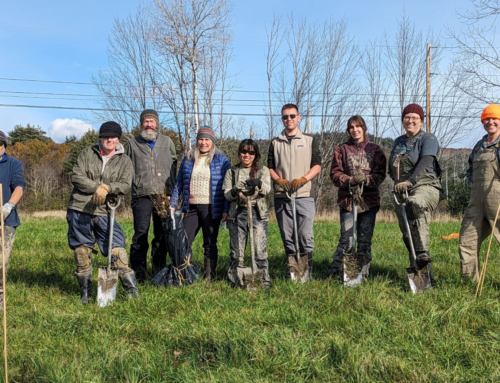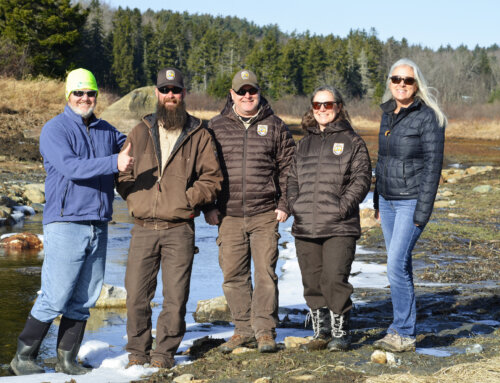January 26, 2017
Testimony of Ron Rhodes, River Steward, Connecticut River Watershed Council
before the House Committee on Natural Resources, Fish and Wildlife.
Honorable Ladies and Gentlemen,
Thank you for the opportunity to testify today in support of H. 53 and on the benefits of planting native trees and shrubs along our Vermont waters.
As you may know, the Connecticut River Watershed Council is a membership based non-profit that advocates for the four-state Connecticut River watershed. We work to protect the river, its tributaries, the land, plants, and creatures throughout the entire watershed. As one of four river stewards employed by the Council, my work in Vermont and New Hampshire focuses on river restoration projects including deadbeat dam removals and riparian buffer tree plantings along our rivers.
These tree planting projects in flood hazard areas are critically important and, I would argue, the most cost effective restoration projects we can implement throughout Vermont. Native trees and shrubs provide a range of important benefits to rivers, people and animals in our State, including:
• Reducing flooding and erosion;
• Slowing pollution runoff;
• Providing important habitat for all kinds of fish and wildlife;
• Keeping our rivers cool for fish, including brook trout – the state cold water fish; and
• Improving water quality so that we can safely swim, fish and boat in our waters.
Watershed groups like CRC, the White River Partnership, the Black River Action Team, Friends of the Winooski River and many, many others planted nearly 13,000 trees along more than 23,000 linear feet of streambank in 2015. In addition, the regional conservation districts installed more than 24,000 linear feet of buffer plantings that year. National non-profits, such as the Lions Club and Trout Unlimited, also support tree plantings locally.
Planting trees and reducing flooding, is why we are here today discussing H. 53. Flooding is a part of our Vermont history; 1927, 1936, 1938, 1973, 1976, and of course 2011 are all listed as “major” and/or “statewide” floods by the U.S. Geological Survey.
We are all at risk of damage from flooding. Our roads cross small streams and major rivers. Many of our critical buildings, such as town halls and fire departments, are in floodplains. Flood damage is expensive to repair and repetitive in that we often have paid to replace the same structure over and over again after each subsequent flood.
Natural flood protection via tree plantings, wetlands restoration and floodplain forests can in many cases adequately protect our buildings and infrastructure by reducing the volume and velocity of water flowing through our communities during storms. We have numerous examples from Irene where these natural protections along our rivers not only survived but helped reduce damage downstream. The bottom line is we need more of these natural protections and we need them now before the next Irene hits.
Planting trees in flood hazard areas is one of the most cost effective, low impact ways we can reduce flood damage and requiring a permit would be a major deterrent. Imagine telling every farmer, town or other landowner that they need a permit to stick a shovel 10-12 inches into the soil in order to insert a tree or shrub. We need to facilitate more plantings, not impede them with permit requirements. I certainly understand and agree with a permit being required before any construction or development can begin within a flood hazard area, but not for tree plantings.
According to FEMA, permits are required to ensure that proposed development projects are “safe from flood damage” as part of the National Flood Insurance Program. But trees are not structures and certainly don’t need a permit to deem them “safe from flood damage.”
In my town of Pomfret, the Flood Hazard Area regulations specifically exempt silvicultural (e.g. trees) and agricultural activities from permitting. And the state floodplain rule general permit allows tree plantings as a “non-reporting” activity.
So we need this bill to pass in order to clear up confusion about the FEMA requirements. All towns, all landowners and all organizations planting trees along our rivers need this clarification in order to avoid delays and added expense.
Trees have been ordered and plantings are scheduled for late April and early May. Please help us get back to work. By passing H. 53 as soon as possible you will remove a barrier so that fifteen thousand or more native trees and shrubs will take root along our Vermont waters.
Thank you.
Ron Rhodes, Pomfret, VT
River Steward
Connecticut River Watershed Council
ctriver.org







